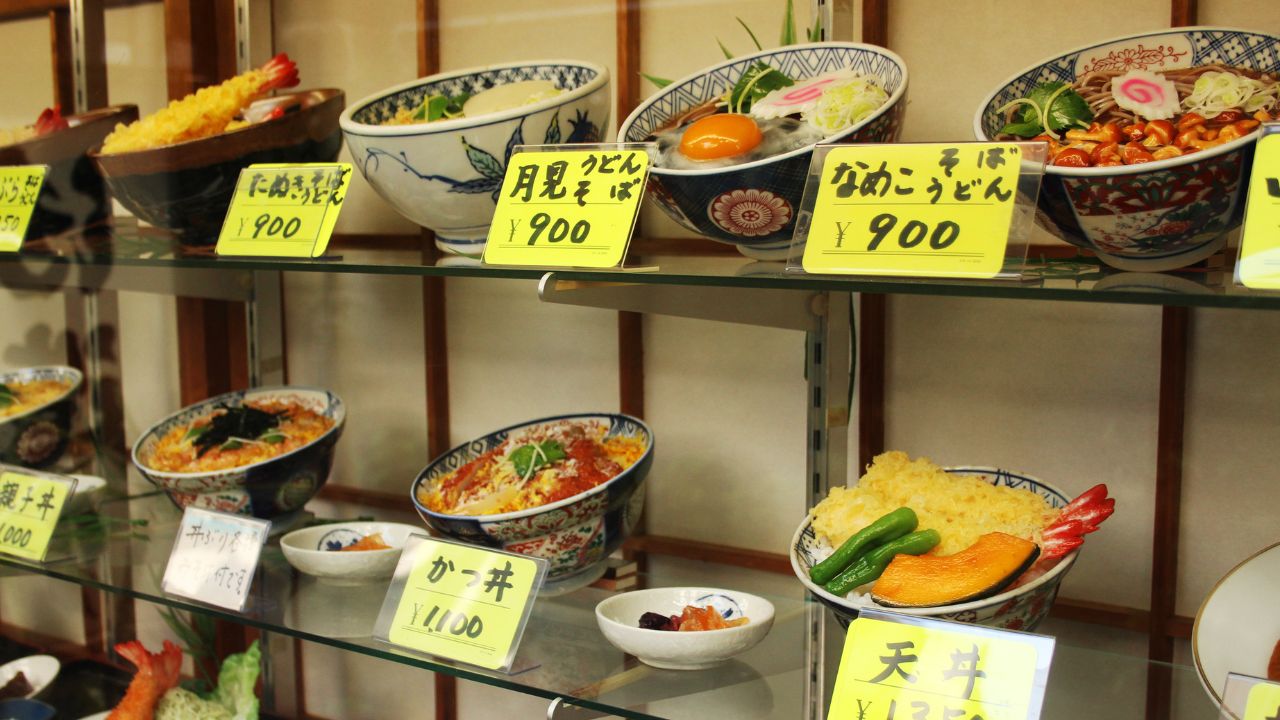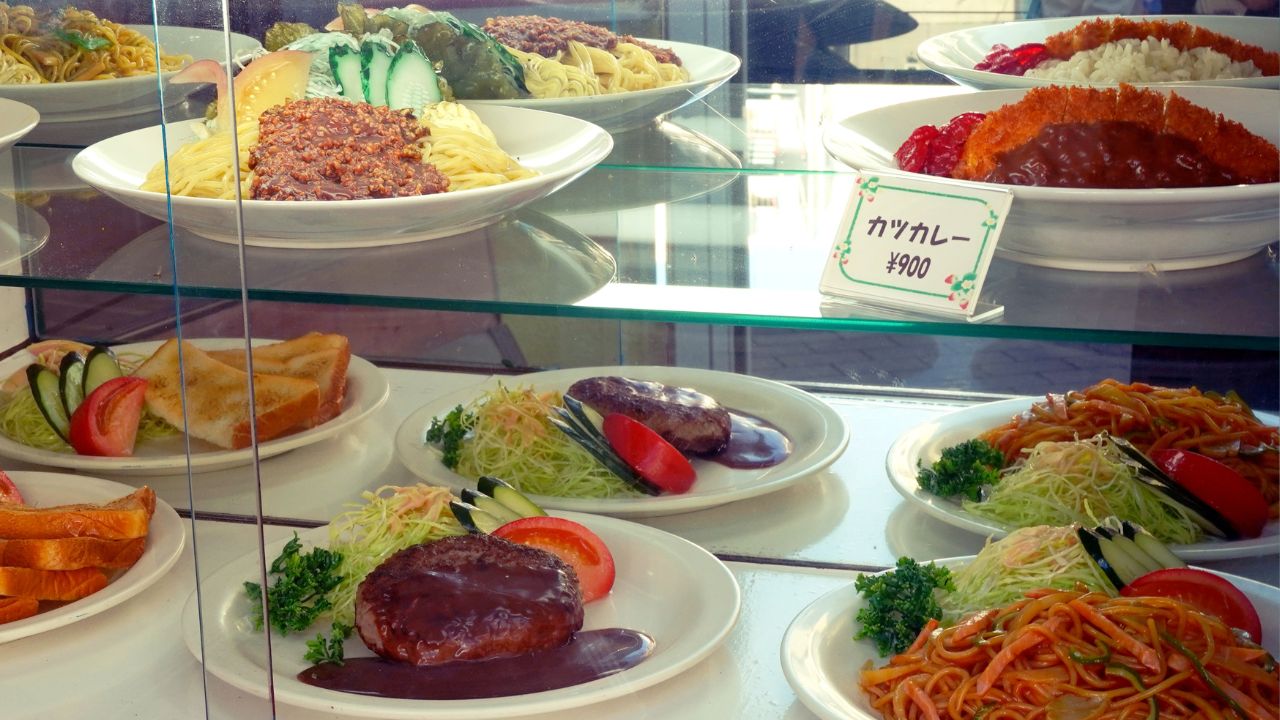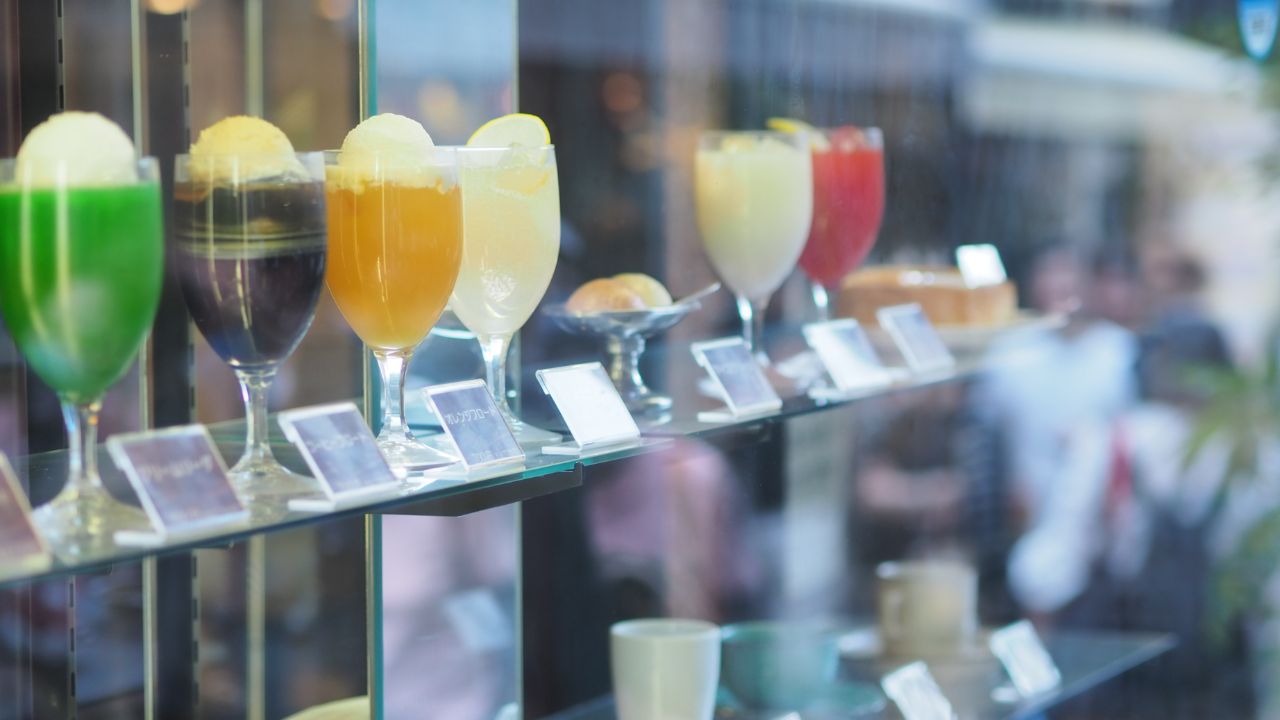

The old saying claims a picture is worth a thousand words, but Japan’s hyper-realistic food models suggest that sometimes what you need isn’t words at all. The artificial display foods known as shokuhin sampuru that fill restaurant windows across Japan represent a fascinating innovation with nearly a century of history, showing how a uniquely Japanese craft evolved into an entire industry and pioneered a revolutionary form of visual communication.
Sampuru first originated in the 1920s, when rapid modernization in Japan drew masses of rural workers into the cities, creating a new class of urban diners who found themselves bewildered by restaurant culture itself. Department stores began opening cafeterias to serve these new city workers, many from farming backgrounds who struggled not only with traditional city dishes they’d never encountered, but also with exotic Western imports like spaghetti and hamburgers that were becoming fashionable among the urban elite populations. After the devastating 1923 Great Kanto earthquake, Tokyo’s Shirokiya department store emerged as a pioneer in solving this communication problem. Shirokiya had opened the first restaurant in a Japanese department store in 1911 and was among the first establishments to reopen after the disaster, serving masses of people who could no longer cook at home. Rather than displaying real food that would attract insects and deteriorate throughout the day, Shirokiya introduced the first food replicas in their dining hall – a revolutionary approach that combined visual marketing with commercial efficiency.
*Watch the video in full screen by clicking Play and then the Full screen icon on the lower right corner.
The success led to rapid adoption by other department stores and eventually small restaurants across Japan. But this innovation became an entire industry through the vision of entrepreneur Takizō Iwasaki, who launched his business in 1932. Drawing inspiration from his childhood memory of seeing spilled candle wax form the shape of a flower in water, Iwasaki used candle wax to craft a model of omurice (omelet rice) which his wife reportedly couldn’t distinguish from the real thing. Soon Iwasaki’s creation was drawing crowds at an Osaka department store restaurant. From his workshop in the mountain town of Gujō Hachiman in Gifu prefecture, Iwasaki founded what would become Iwasaki Mokei Seizo Co., Ltd. Today, his company still dominates 70% of Japan’s sampuru market, testament to the enduring effectiveness of his original vision. The term “sampuru” itself, derived from the English word “sample,” would become synonymous with a uniquely Japanese approach to visual communication.
Each sampuru piece requires individual handcrafting, with master artisans developing specialized techniques passed down through generations. These aren’t mere restaurant props but works of art that demand genuine skill to create. Watch a craftsperson delicately painting individual grains of rice or achieving that perfect glossy sheen on a bowl of ramen broth, and you might assume these are sculptures headed to a museum, not simply a restaurant display window. Early techniques involved applying agar jelly over actual food items to create molds, then pouring paraffin wax into them – agar was preferred over gypsum because it captured food textures more accurately. The 1970s forced a complete material revolution when heated restaurant display cases caused wax models to melt. Modern production now uses silicon molds filled with durable vinyl resin, allowing for greater detail and longevity.


Following these technological innovations, sampuru became ubiquitous in restaurants throughout Japan and gained even greater significance in recent decades as Japan began welcoming increasing numbers of international tourists. In this phase of their evolution, sampuru served as a cross-cultural tool helping to bridge language and cultural barriers and make Japanese food accessible to non-Japanese restaurant-goers. Foreign visitors became so enchanted by the astonishingly realistic food models that demand emerged for portable versions as souvenirs, prompting manufacturers to create a consumer market featuring everything from sashimi-shaped phone accessories to dumpling keychains. But while they can double as souvenirs, sampuru‘s core function remains unchanged: serving as three-dimensional visual communication tools not only for cuisine but for other contexts as well.
While most people in Japan encounter sampuru in eatery windows, its applications extend far beyond the restaurant industry. Japanese hospitals have quietly revolutionized nutrition education by incorporating these models into patient counseling programs. Hospital nutrition rooms feature sampuru displays where traditional price tags are replaced with detailed nutritional information, creating powerful learning tools for dietary education.
The difference is dramatic. Patients living with diabetes, for instance, don’t simply read about portion control – they hold a pat of butter on a measuring spoon, experiencing its actual weight and size. They examine models demonstrating how cooking methods dramatically affect caloric content: a simple piece of grilled fish contains so many calories, while the same fish breaded and deep-fried can contain more than twice as many calories. The visual comparison makes nutritional concepts concrete in ways that charts and graphs cannot match.
This educational effectiveness reveals something fundamental about human learning. Three-dimensional objects engage multiple senses simultaneously, creating stronger memory associations than reading text or viewing flat images. When abstract concepts like “appropriate portion size” become physical objects that patients can examine and handle, they transform from intellectual knowledge into visceral understanding.


The continued relevance of sampuru in our increasingly digital age speaks to something essential about human communication. While restaurants experiment with tablet menus and Instagram-worthy food photography, sampuru offers what screens cannot. This three-dimensional approach accommodates different learning styles and transcends literacy barriers, making it as effective for foreign tourists navigating Tokyo restaurants as for hospital patients learning portion control.
Like many traditional Japanese crafts, the art of sampuru faces contemporary pressures from digital alternatives and the aging population of master artisans, yet it has endured with the same essential goal – creating communicative objects we can touch, examine, and understand instinctively. In an era of increasing digital mediation, sampuru reminds us that tangible craft is one of our most powerful forms of communication.
Like many traditional Japanese crafts, the art of sampuru faces contemporary pressures from digital alternatives and the aging population of master artisans, yet it has endured with the same essential goal – creating communicative objects we can touch, examine, and understand instinctively. In an era of increasing digital mediation, sampuru reminds us that tangible craft is one of our most powerful forms of communication.
Related ExhibitionLooks Delicious!
Exploring Japan’s Food Replica Culture

Looks Delicious! | Exploring Japan’s Food Replica Culture is the first U.S. exhibition dedicated to shokuhin sampuru, Japan’s astonishingly realistic food replicas. Found in restaurant windows across the country, these handcrafted models are so lifelike they’re often mistaken for the real thing. Originating in the early 20th century, food replicas were first made from wax to showcase unfamiliar dishes in department store restaurants. Today, they’re crafted from durable resins and have become a beloved part of Japanese dining culture, also appearing as novelty items like keychains and phone cases. Visitors can explore seven themed areas, learn about the history and craftsmanship of food replicas, and even create their own bentō to photograph and share.
Dates
Thu. Sep. 18, 2025 – Sun. Jan. 25, 2026
Closed
Thanksgiving | Thu. Nov. 27, 2025
Holiday | Thu. Dec. 25, 2025
Hours
Mon. – Fri. | 11:00 AM – 7:00 PM
Sat. – Sun. | 11:00 AM – 8:00 PM
Location
JAPAN HOUSE Gallery, Level 2


AloJapan.com